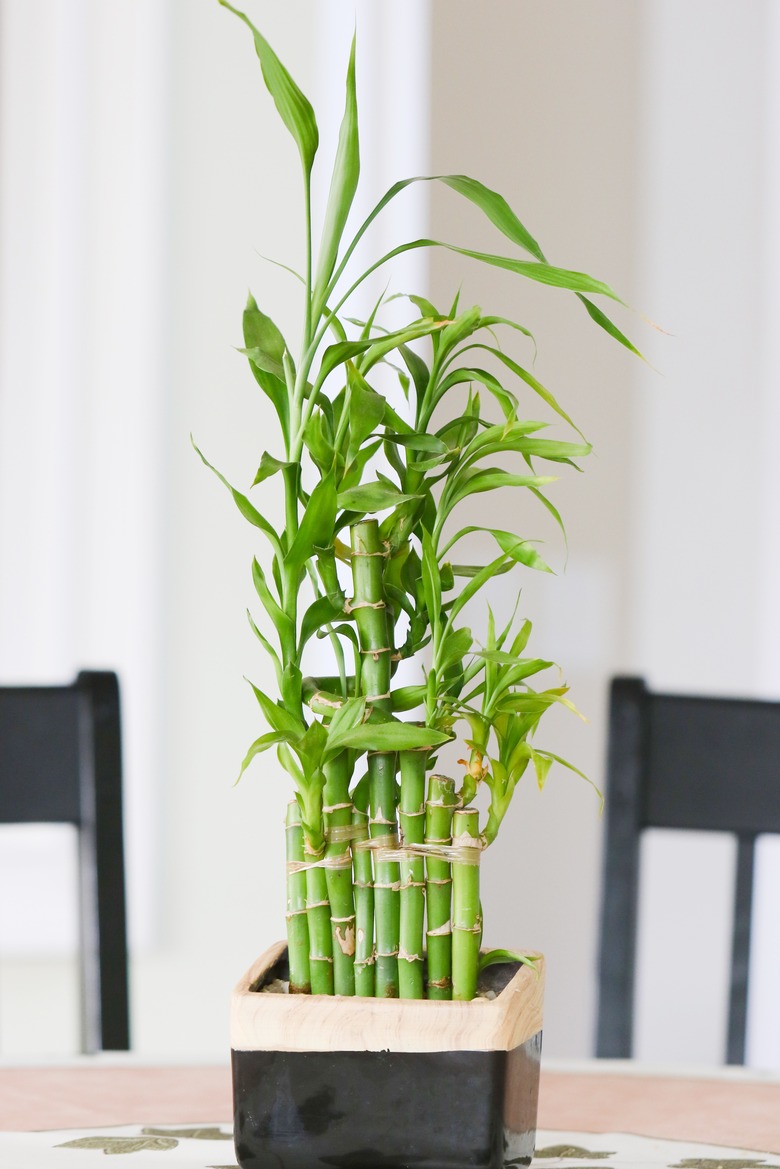How To Make Bamboo Grow Faster
We may receive a commission on purchases made from links.
Bamboo (family Poaceae) by cellular construction is one of the fastest-growing plants on Earth, and unless you have an unlimited supply of panda bears that need feeding, making bamboo grow faster is unnecessary, as some species have been known to grow 3 feet in a day, such as Chinese Moso bamboo (Phyllostachys edulis, USDA hardiness zones 7-10). Bamboo is not a tree but a perennial grass and grows in colonies via rhizomes created underground or in clumps. If you've ever stood in the middle of a stand of bamboo, you'll hear them "singing," which is actually the sound of the wind trapped in the leaves of the grass.
Growing Profiles of Bamboo
Growing Profiles of Bamboo
According to research published in December 2016 in the journal AoB Plants, there are more than 1,600 species of bamboo, with 14 percent having been introduced to growing fields beyond their original habitat of the temperate areas in Asia.
Bamboo is ideal for gardens and landscapes and is also used as a hedge or ground cover. While easy to grow, it must be contained and requires specific soil compositions and weather for healthy growth. Tropical and temperate climates are preferred, but there are also cold-weather varieties. The two types of bamboo are the clumping (Fargesia spp.) and running (Phyllostachys spp.) bamboo, with running bamboo considered to be invasive. You should perform careful research before planting any variety of bamboo.
Clumping Bamboo Characteristics
Clumping Bamboo Characteristics
The clumping variety of bamboo establishes a clump of grass and doesn't travel outside the width of the clump once it is set. It is also noninvasive. Most grow well in U.S. Department of Agriculture hardiness zones 8b and above and are the fastest-growing grasses in the bamboo family. Chinese dwarf bamboo (Bambusa multiplex, zones 6-9) and weaver's bamboo (Bambusa textilis, zones 8-11) are cold-hardy types that can withstand temperatures that dip to 12 to 15 degrees Fahrenheit. They reach mature height in four to six years and are ideal for border walls, privacy screens and dust barriers.
The best soil conditions for any Fargesia are ones that are rich, acidic and well-draining. Once the leaves drop, leave them on the soil, as Fargesia likes soil that is rich in organic matter. Spring produces new shoots on all Fargesia, with green panda bamboo (Fargesia rufa 'Green Panda,' zones 5-8) and green screen bamboo (Fargesia robusta 'Green Screen,' zones 5-8) growing faster than other selections. Full sun contributes to the fast growth of both varieties.
Running Bamboo Characteristics
Running Bamboo Characteristics
The vibrant life of running bamboo churns under the soil line from summer to early fall. The stalk of the bamboo is known as the culm, and think of that culm growing horizontally underground. Instead of growing leaves, it grows roots and buds. Those buds develop into new shoots that penetrate the surface of the soil. Then, the growth spurt takes place, some developing their mature height in 30 days. Multiple shoots grow from the rhizomes, creating a grove that matures in a matter of months.
Curiously, the width of the culm is stagnant throughout the life of the running bamboo. If the new shoot is 3 inches in diameter when first appearing, it will be 3 inches in diameter at maturity. Bamboo likes water but doesn't like wet feet. Monitor the watering to determine when enough is enough. When the bamboo is established, it's not necessary to water, but controlled watering promotes faster growth. A well balanced 8-8-8 fertilizer and compost also promote growth.
